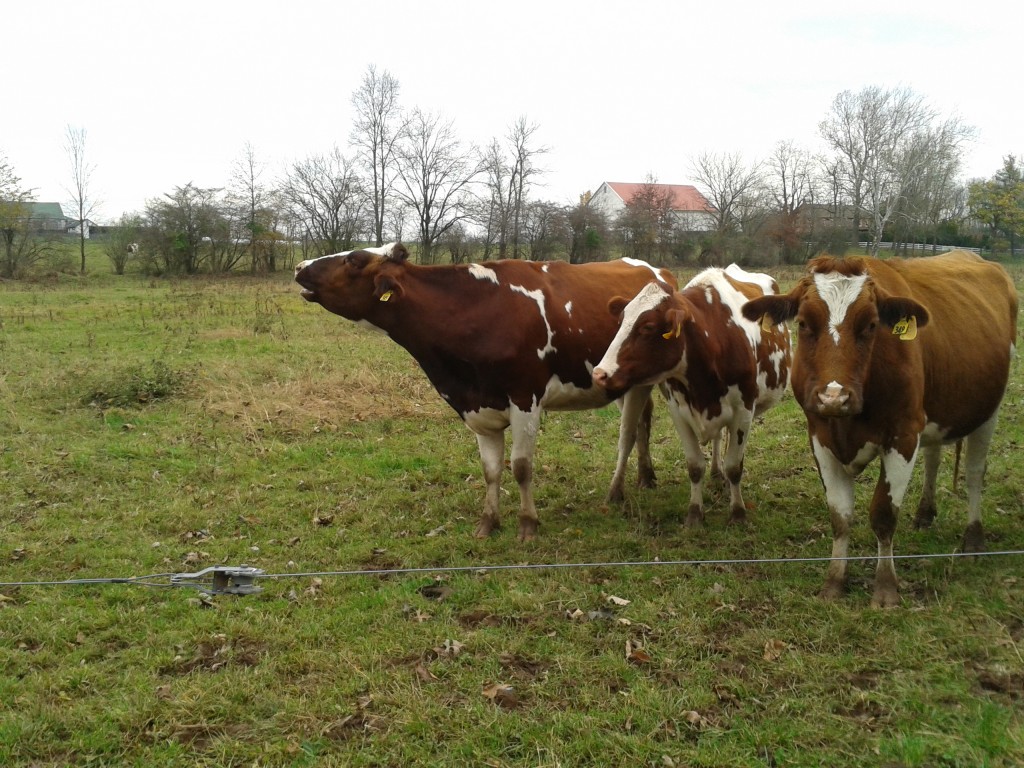Having a healthy pasture is important for herd health and water quality. A pasture is healthy when the plants are lush, weeds are at a minimum, and the ground is entirely covered by vegetation. Animals prefer to graze pastures with high forage quality so it is important to help the pasture provide the maximum amount of edible vegetation. Having a dense and lush pasture also means that manure nutrients are being absorbed by the plants and erosion is being prevented. Rotational grazing, sacrifice areas, and mowing are all useful strategies for improving pasture health.
Mowing
Plants can be encouraged to create new growth faster than they would naturally by using proper mowing strategies. Mowing keeps the grass in a vegetated state and encourages the plant to grow fuller and denser. This practice can also help manage weeds by preventing the weeds from growing and spreading seed. Grass should never be cut shorter than 3 inches.
Rotational Grazing
Dividing the pasture into a series of paddocks and rotating animals between the paddocks allows the pasture plants to sustain growth and maximize production over the long term. The plants should never be grazed shorter than 3 inches and should be allowed to grow to a height of 6-8 inches before the animals are allowed to graze that pasture again. This allows the plants to regrow vegetation and restore energy reserves for future growth. Since animals will naturally choose to eat the healthiest vegetation first, rotating pastures provides nutritious vegetation more often to the animals.
Sacrifice Area
If enough acreage isn’t available to maintain an adequate rotational grazing schedule it might be necessary to establish a sacrifice area. This area will not provide feed value to the animals but will still allow them to be outside and get exercise. Sacrifice areas can either be used as a part of the rotational pattern where animals will remain until the next pasture has recovered, or may be used daily to limit pasture use to only a few hours a day. Since vegetation is sparse in a sacrifice area it is important to manage erosion and nutrient loss in other ways. Sacrifice areas should be located as far away from streams as possible.
Programs
USDA NRCS
USDA NRCS administers a variety of cost share programs to implement conservation practices such as pasture management. The Conewago is USDA’s “Showcase Watershed” meaning the watershed is targeted for resources and funding.
319 Funding
Farms in priority areas of the watershed may also be eligible for funding through the County Conservation Districts’ 319 funding.
Conewago NFWF Funding
Funding is also available through a Conewago National Fish and Wildlife Foundation grant for horse operations of all sizes.
Implementing Best Management Practices on equine facilities is a priority for the Conewago Initiative. Significant funds are available under these programs.
Interested in implementing this practice?
Contact:
Heather Grove, USDA NRCS
(717) 874-2530, heather.grove@pa.usda.gov
Eric Naguski, DCCD
(717) 921-8100, enaguski@dauphinc.org
Web Resources
Pasture Management-
https://extension.psu.edu/catalogsearch/result/?q=pasture+management
Pastures, Fencing andWatering on Small Acreages-
https://www.premier1supplies.com/img/newsletter/05-22-14-goat/PastureGrazingMgmt.pdf
A printable version of this information-
Pasture Management Factsheet

